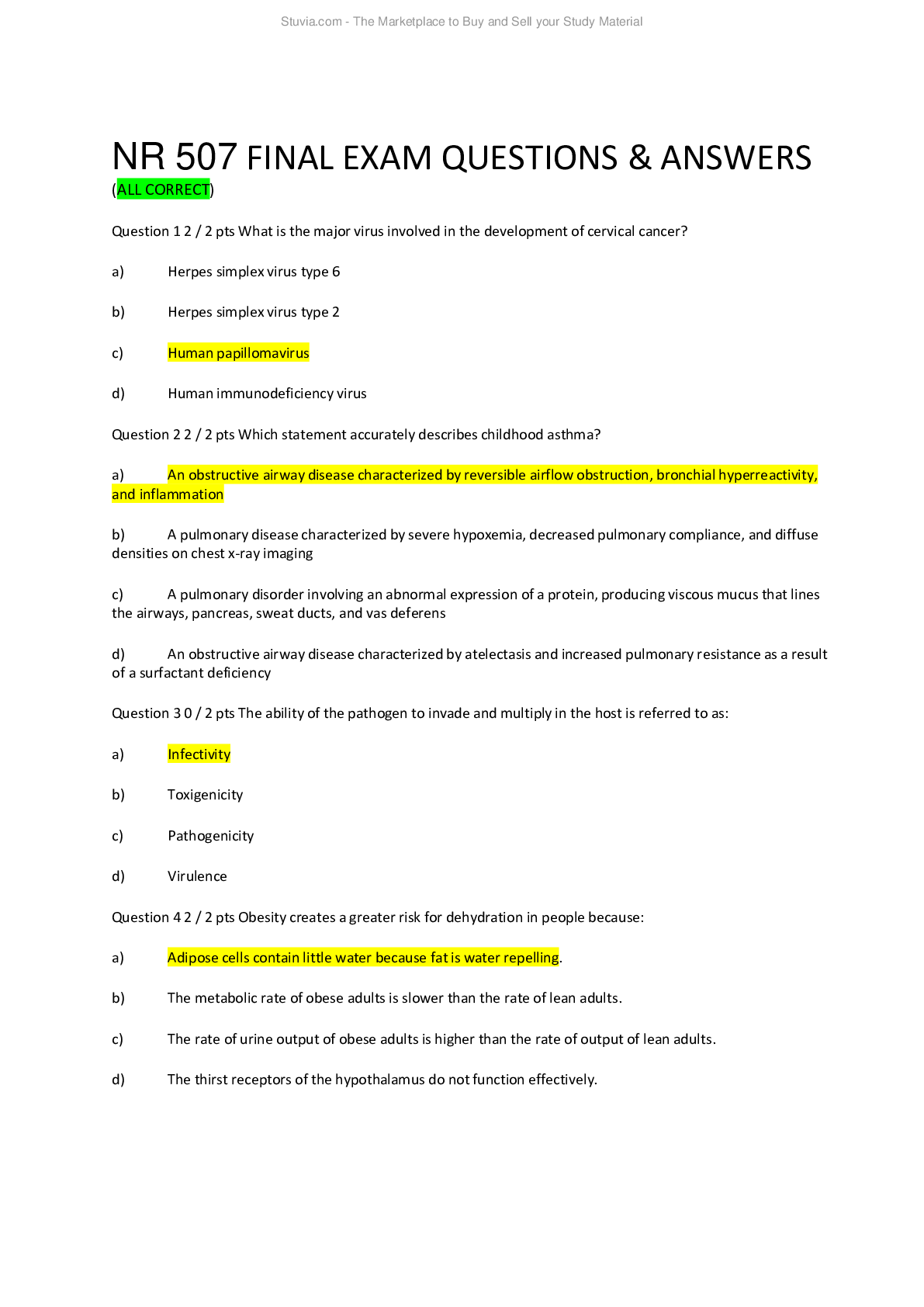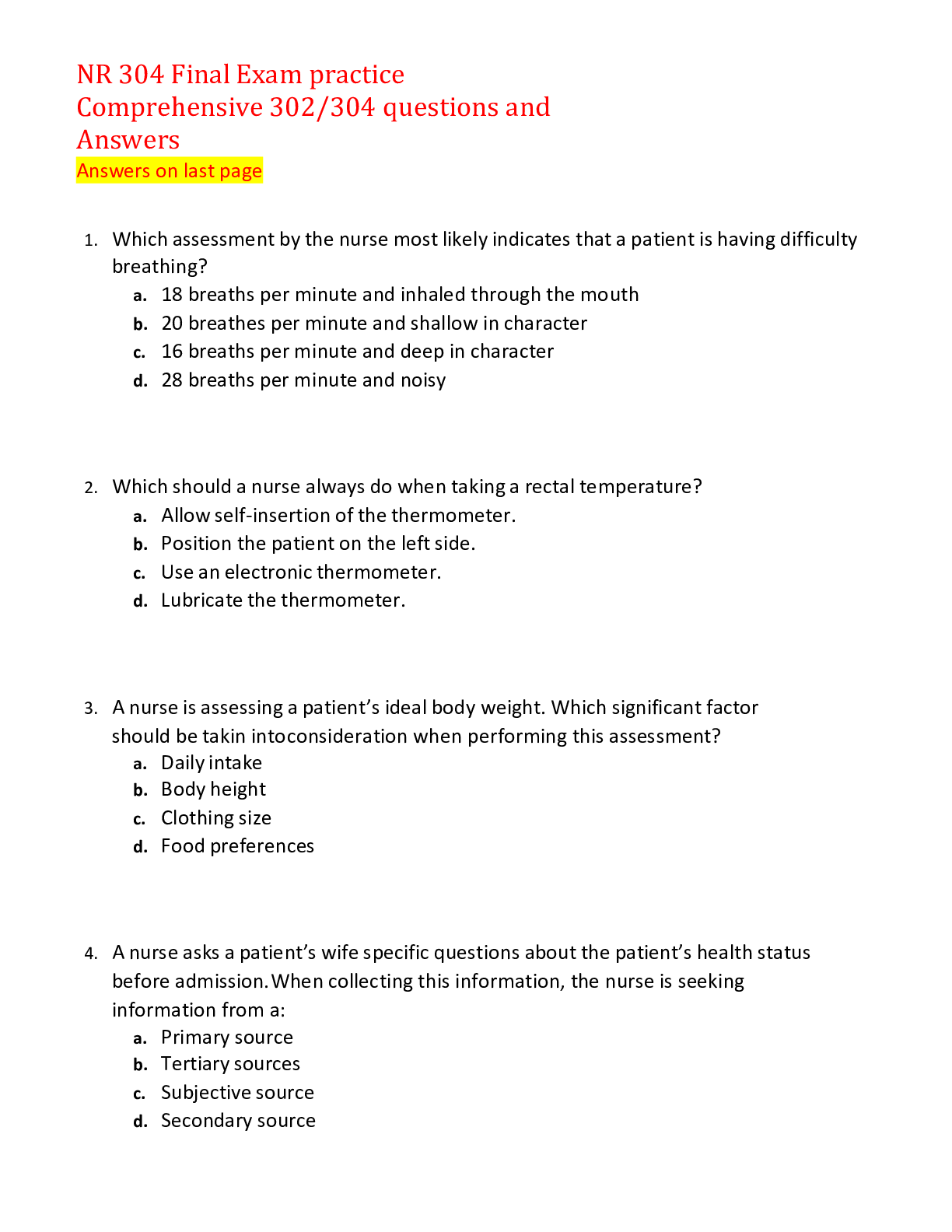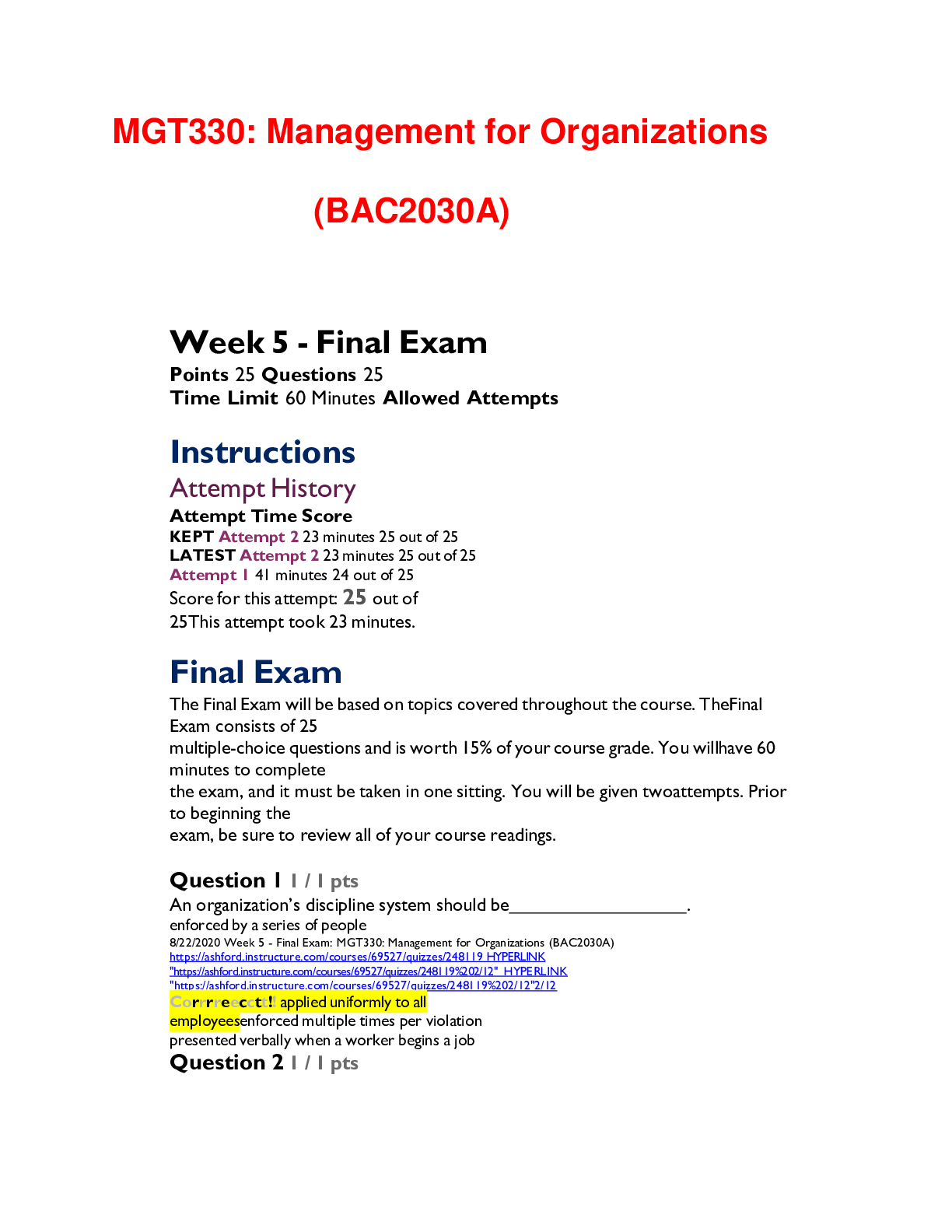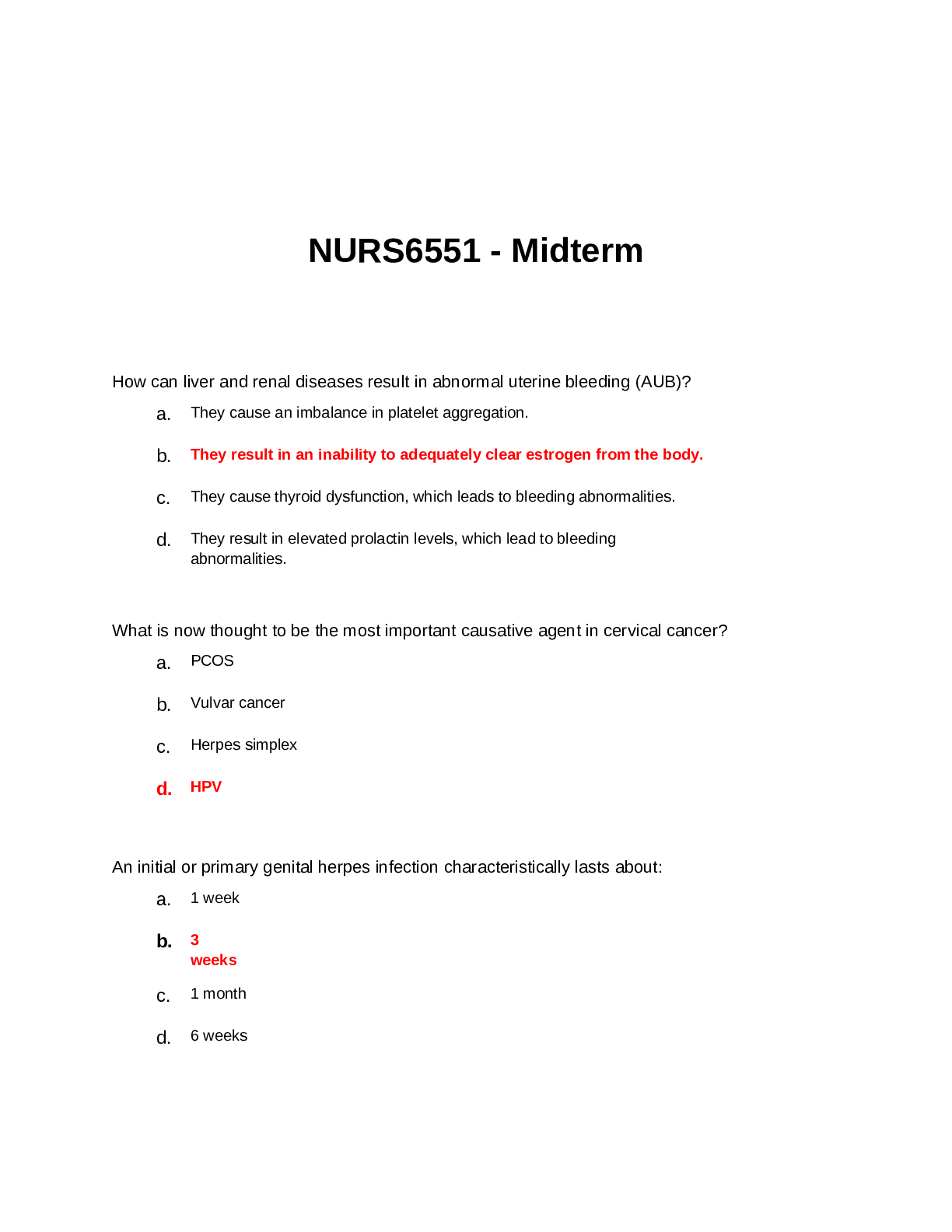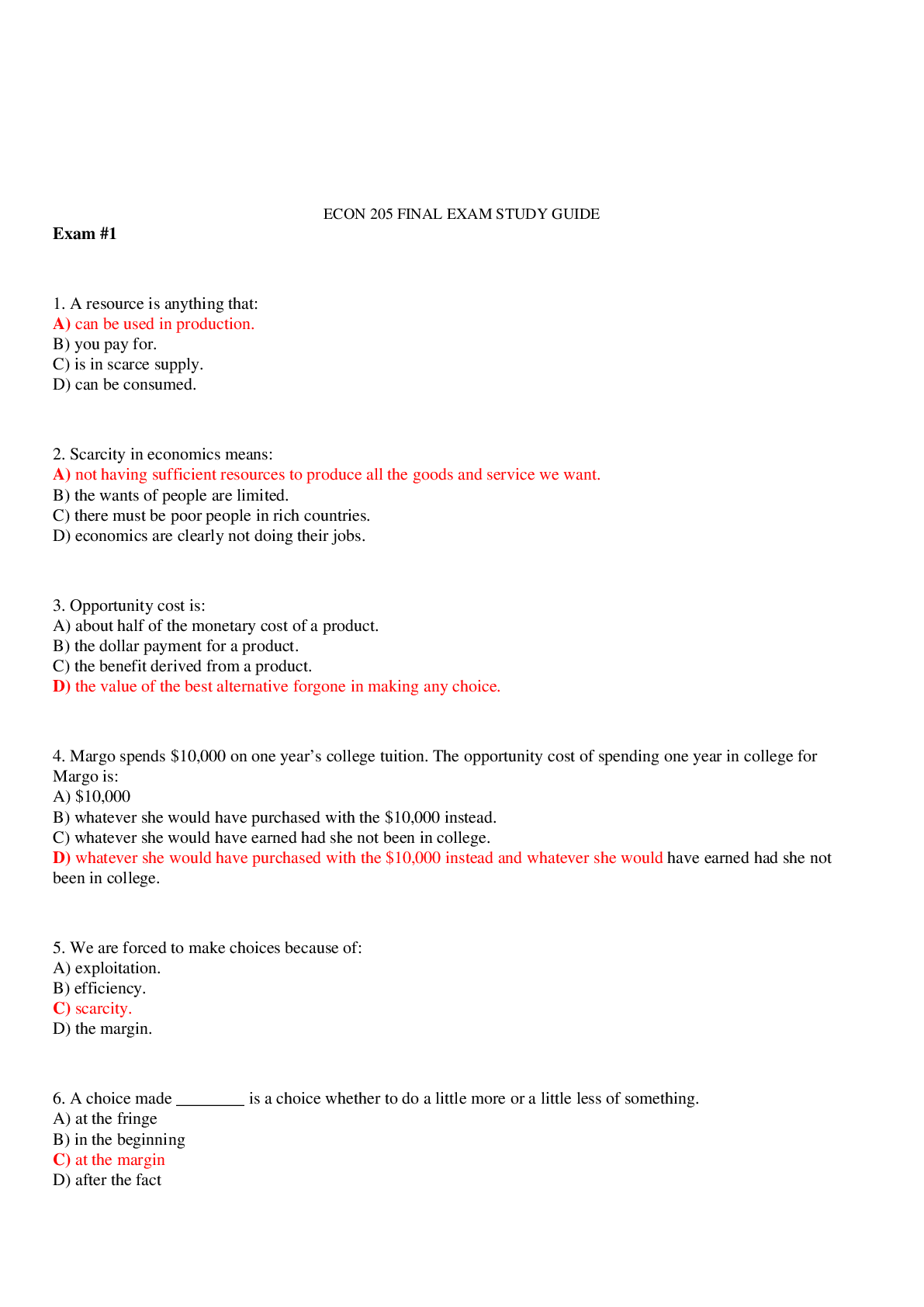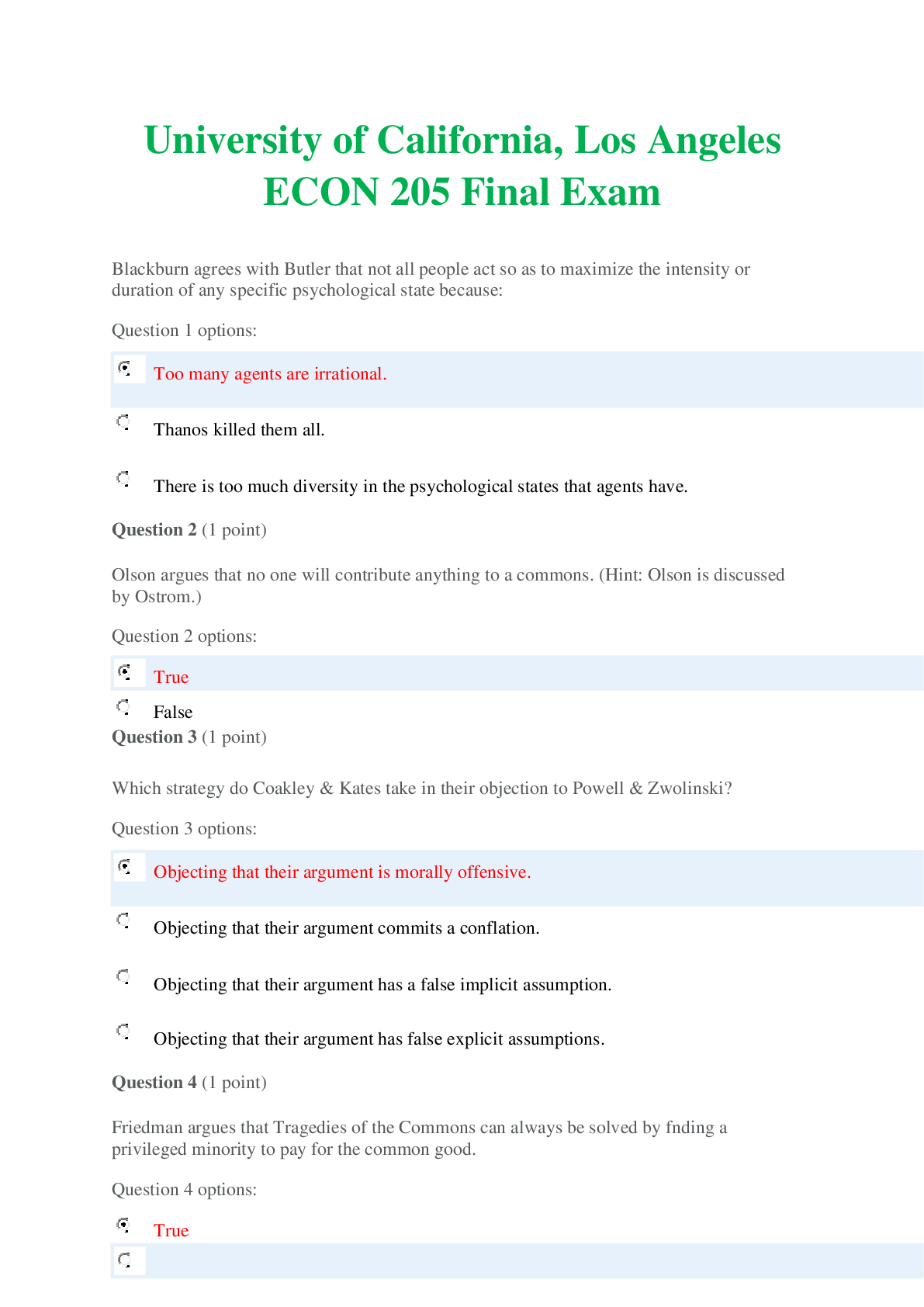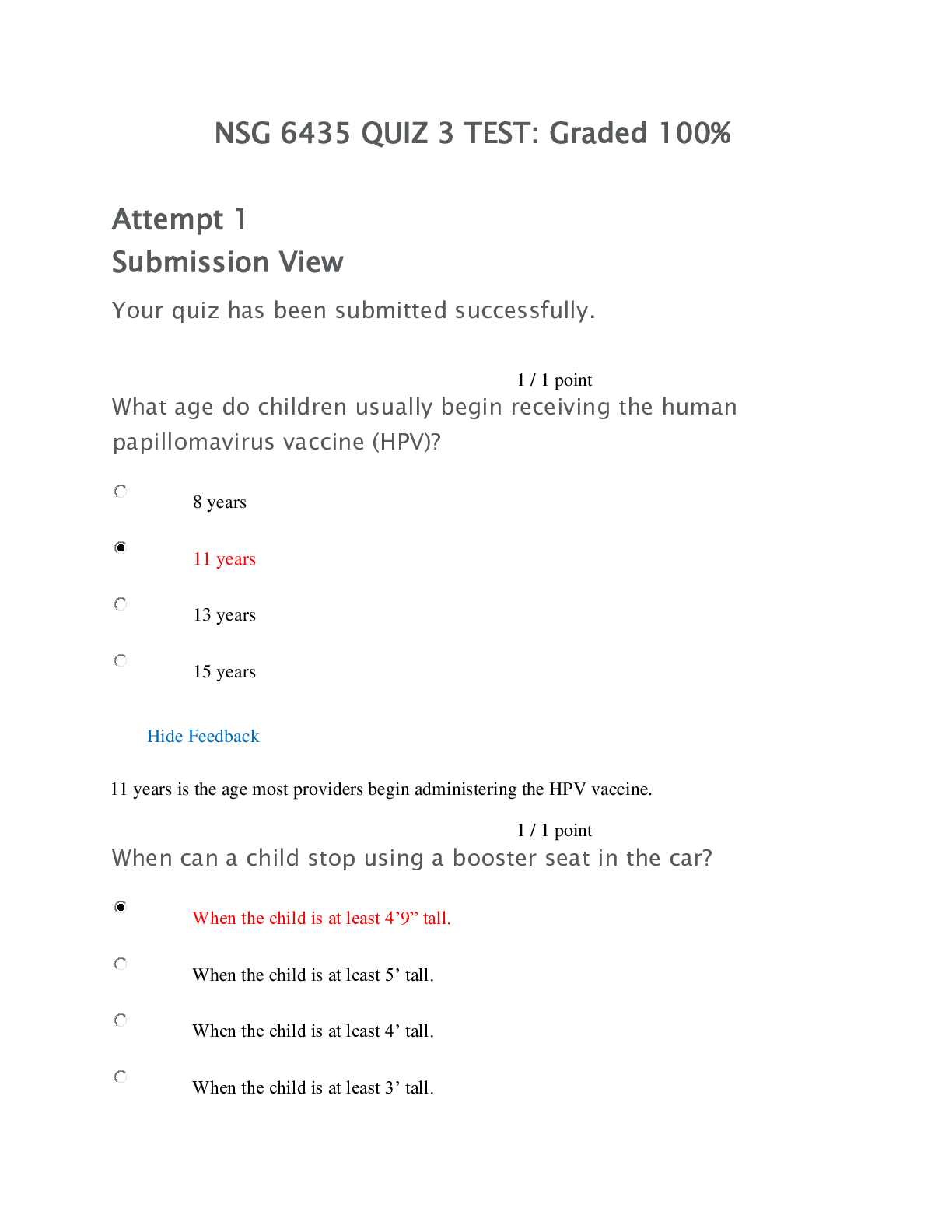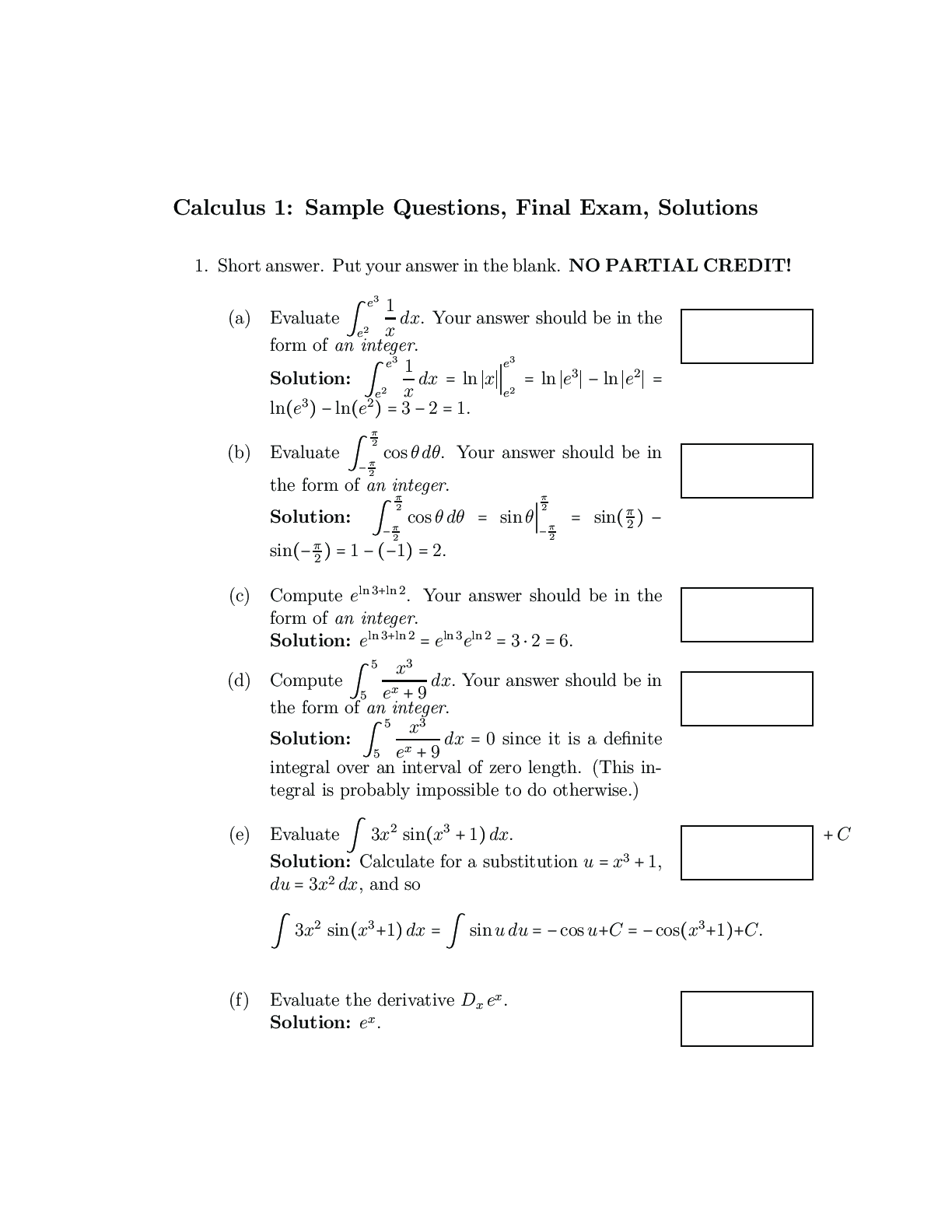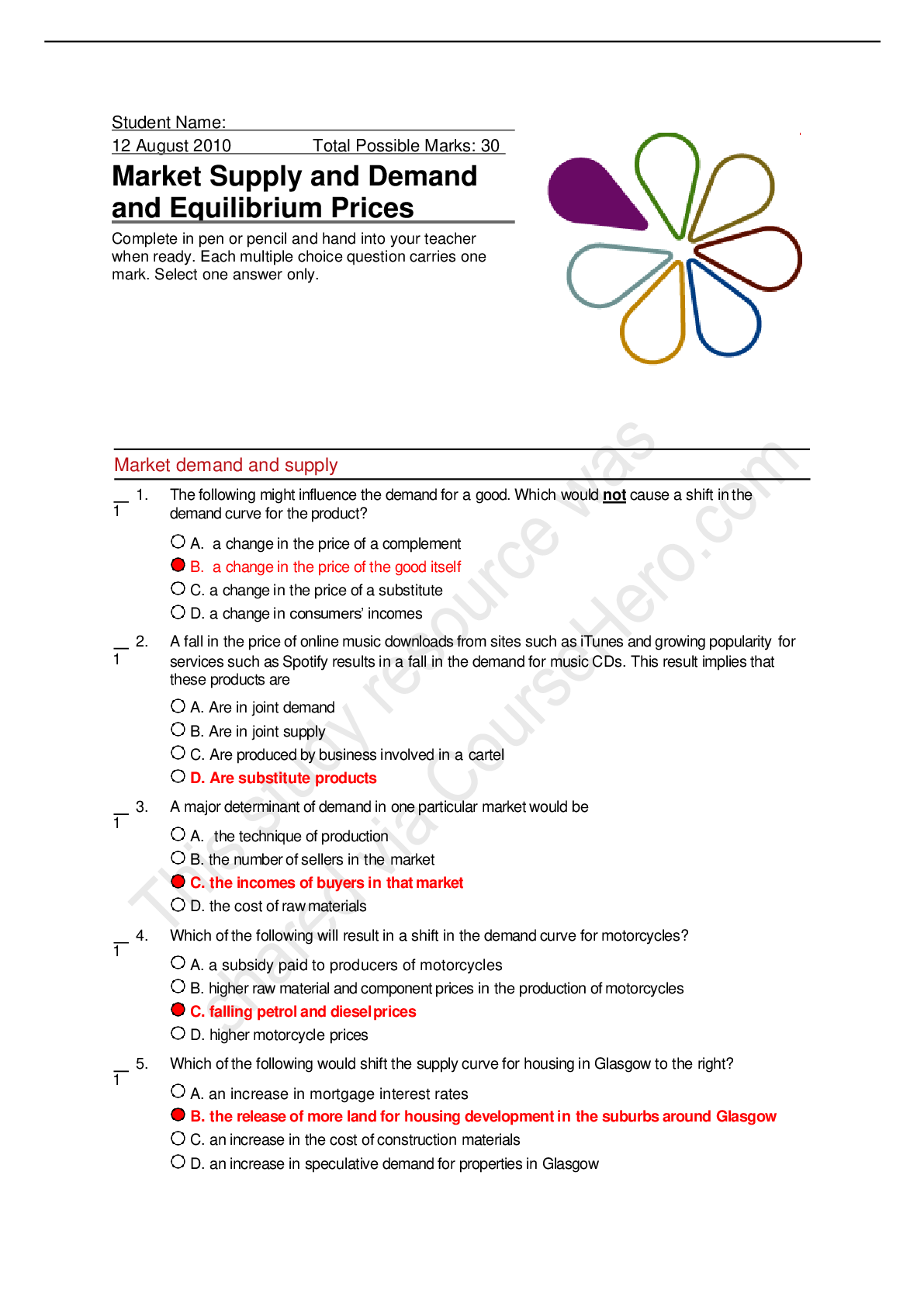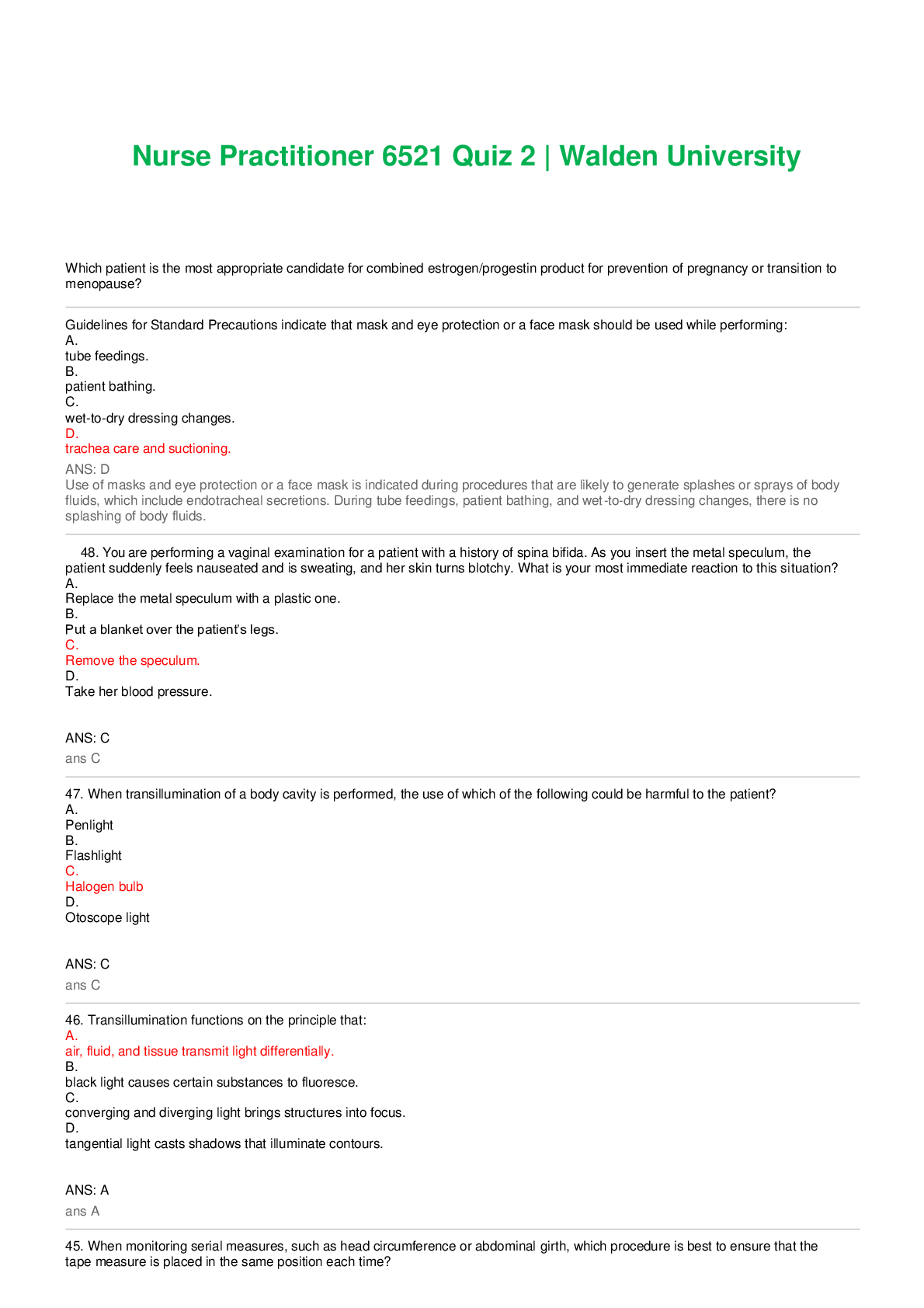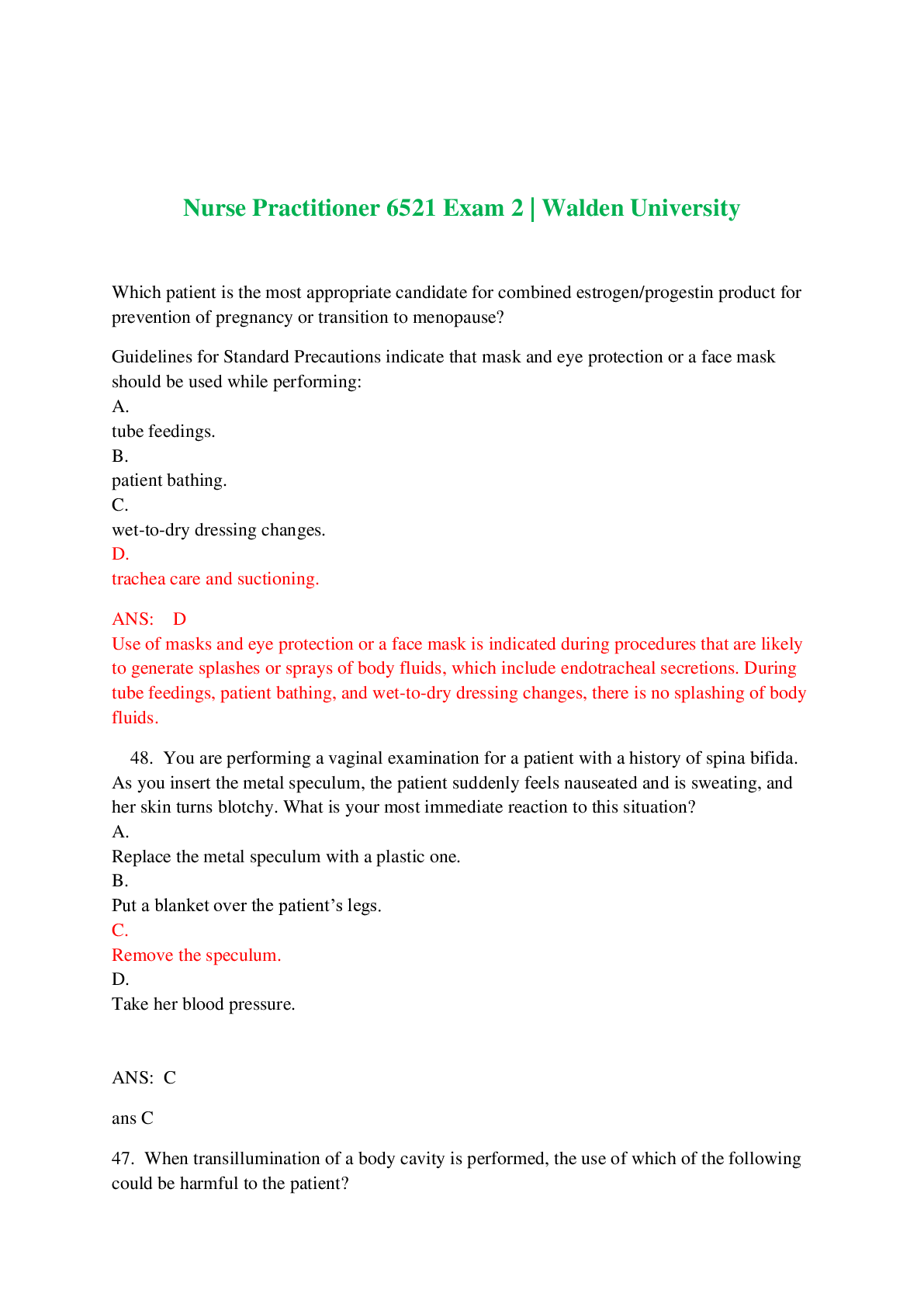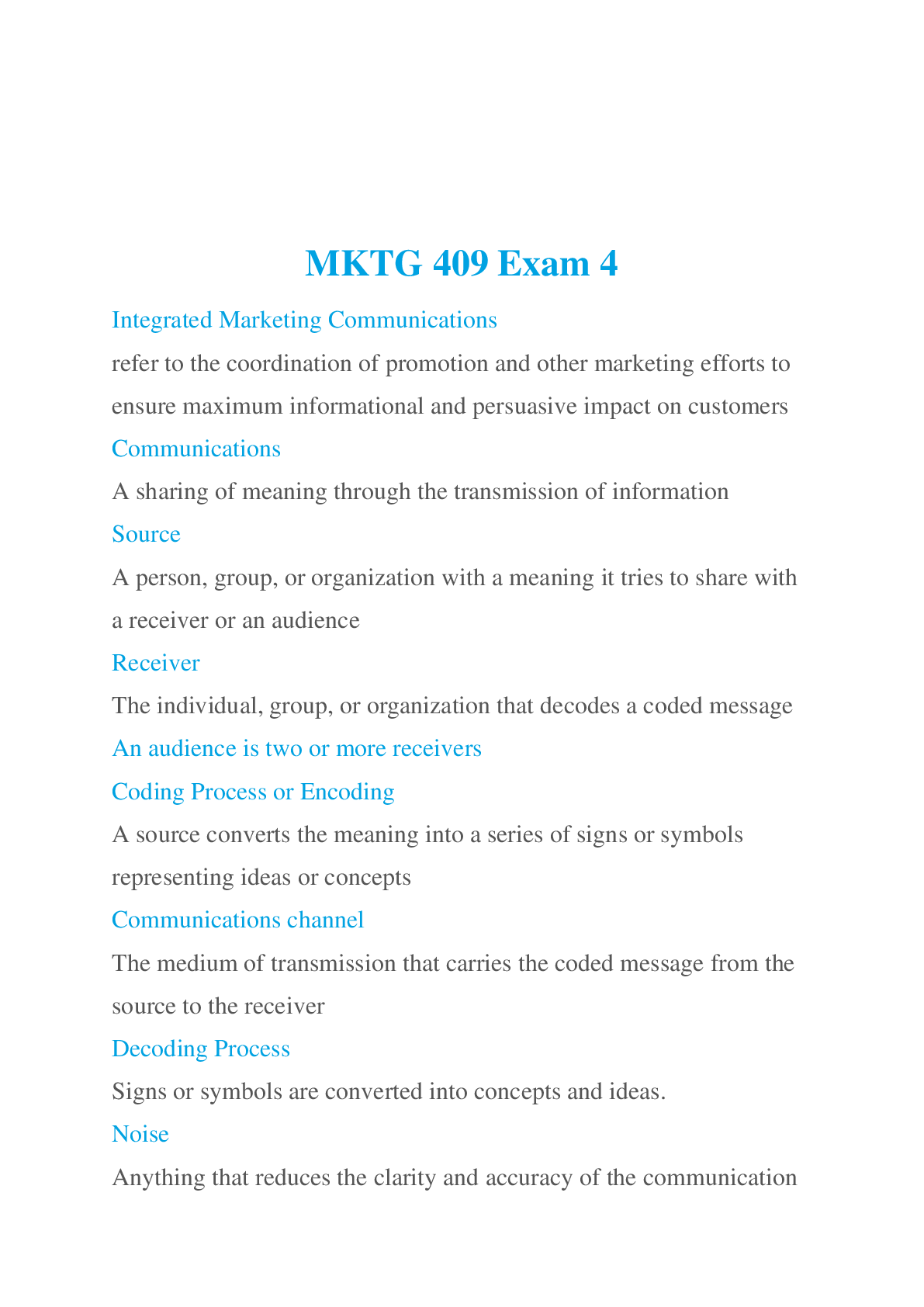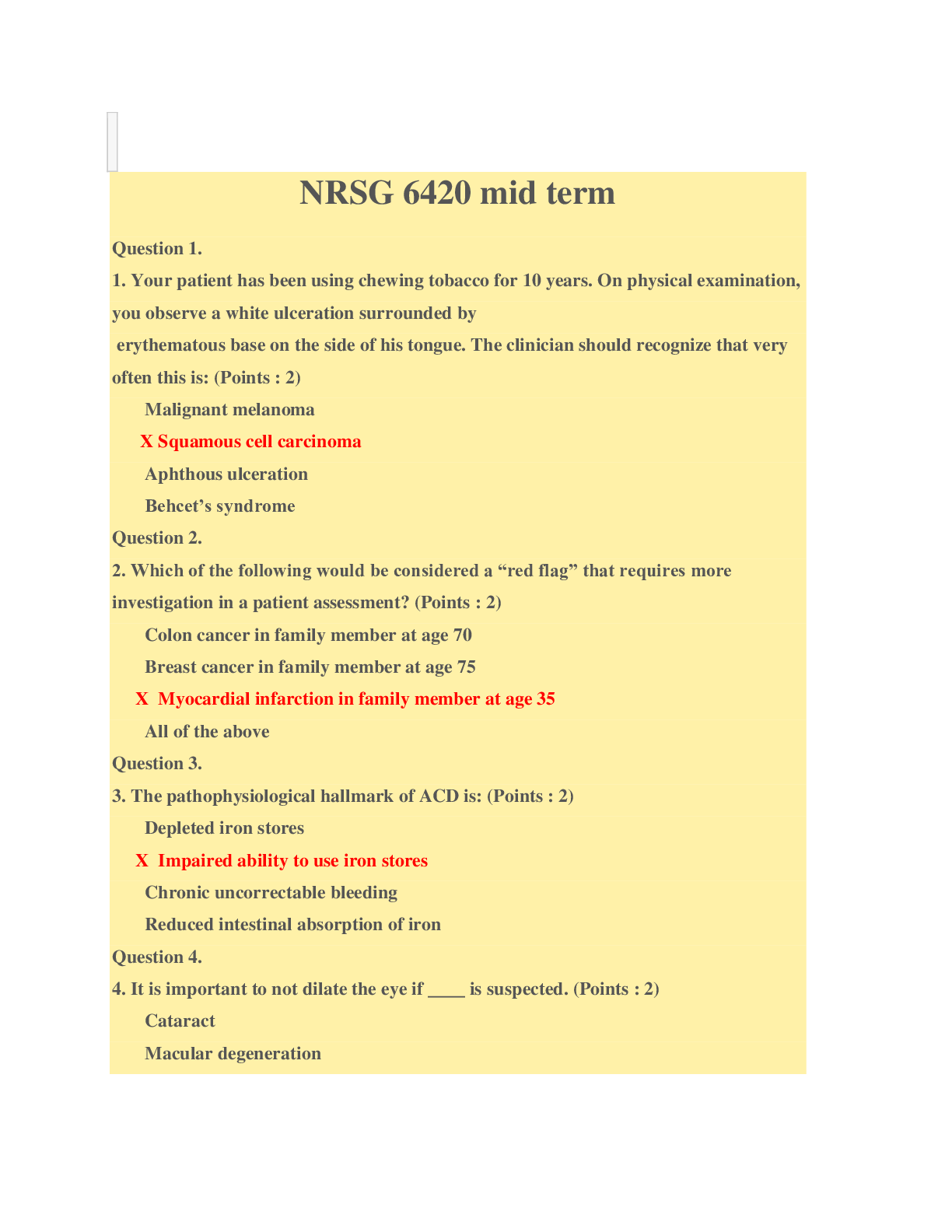NURSING 101 exam1 med
Document Content and Description Below
Questions 1.ID: 4615549930 When planning an assessment of the urethra, what does the nurse do first? Examine the meatus. Note any unusual discharge. Record the presence of abnormalities. ... Don gloves. Correct Before examination begins, body fluid precautions (gloves) must be implemented first. Examining the meatus, noting unusual discharge, or recording the presence of abnormalities are things that the nurse should do after putting on gloves. Awarded 1.0 points out of 1.0 possible points. 2.ID: 4615549903 When caring for a client with uremia, the nurse assesses for which symptom? Tenderness at the costovertebral angle (CVA) Cyanosis of the skin Incorrect Nausea and vomiting Correct Insomnia Manifestations of uremia include anorexia, nausea, vomiting, weakness, and fatigue. CVA tenderness is a sign of inflammation or infection in the renal pelvis. Cyanosis is related to poor tissue perfusion. Insomnia is nonspecific and may be caused by psychoemotional factors, medications, or other problems. Awarded 0.0 points out of 1.0 possible points. 3.ID: 4615547591 Which laboratory test is the best indicator of kidney function? Blood urea nitrogen (BUN) Creatinine Correct Aspartate aminotransferase (AST) Alkaline phosphatase Creatinine excretion, the end product of muscle metabolism, remains relatively steady and therefore is the best indicator of renal function. BUN may be affected by protein or fluid intake. AST and alkaline phosphatase are measures of hepatic function. Awarded 1.0 points out of 1.0 possible points. 4.ID: 4615549922 When performing bladder scanning to detect residual urine in a female client, the nurse must first assess which factor? Abdominal girth Presence of urinary infection Incorrect History of hysterectomy Correct Hematuria The scanner must be in the scan mode for female clients to ensure the scanner subtracts the volume of the uterus from the measurement, or in the scan mode for male clients for women who have undergone a hysterectomy. The nurse performs this procedure in response to distention or pressure in the bladder; girth is not a factor. This procedure detects urine retained in the bladder, not infection. The presence of retained urine in the bladder is assessed, regardless of hematuria. Awarded 0.0 points out of 1.0 possible points. 5.ID: 4615549918 The nurse is reviewing the medical record for a client with polycystic kidney disease who is scheduled for computed tomographic angiography with contrast: History and Physical Assessment Medications Diagnostic Findings Polycystic kidney disease Diabetes Hysterectomy Abdomen distended Negative edema Glyburide Metformin Synthroid BUN 26 mg/dL Creatinine 1.0 mg/dL HbA1c 6.9% Glucose 132 mg/dL Which intervention is essential for the nurse to perform? Obtain a thyroid-stimulating hormone (TSH) level. Report the blood urea nitrogen (BUN) and creatinine. Hold the metformin 24 hours before and on the day of the procedure. Correct Notify the provider regarding blood glucose and glycosylated hemoglobin (HbA1c) values. Before studies with contrast media are performed, the nurse must withhold metformin, which may cause lactic acidosis. The focus of this admission is the polycystic kidneys; a TSH level is not essential at this time. BUN and creatinine are normal. The glucose is only mildly elevated (if fasting), and the HbA1c is in an appropriate range. Awarded 1.0 points out of 1.0 possible points. 6.ID: 4615549928 A client has returned from a captopril renal scan. Which teaching does the nurse provide when the client returns? “Arise slowly and call for assistance when ambulating.” Correct “I must measure your intake and output.” “We must save your urine because it is radioactive.” “I must attach you to this cardiac monitor.” Captopril can cause severe hypotension during and after the procedure, so the client should be warned to avoid rapid position changes and about the risk for falling as a result of orthostatic (positional) hypotension. Intake and output measurement is not necessary after this procedure, unless it had been requested previously. A small amount of radionuclide is used in a renal scan; the urine is not radioactive, although the nurse should practice Standard Precautions, as always, and wear gloves. Cardiac monitoring is not needed, although the nurse should monitor for hypotension secondary to captopril. Awarded 1.0 points out of 1.0 possible points. 7.ID: 4615549911 Which assessment finding alarms the nurse immediately after a client returns from the operating room for cystoscopy performed under conscious sedation? Pink-tinged urine Incorrect Urinary frequency Temperature of 100.8° F Correct Lethargy Fever, chills, or an elevated white blood cell count after cystoscopy suggest infection after an invasive procedure; the provider must be notified immediately. Pink-tinged urine is expected after a cystoscopy; gross hematuria would require notification of the surgeon. Frequency may be noted as a result of irritation of the bladder. If sedation or anesthesia was used, lethargy is an expected effect. Awarded 0.0 points out of 1.0 possible points. 8.ID: 4615547599 Which instruction does the nurse give a client who needs a clean-catch urine specimen? “Save all urine for 24 hours.” “Use the sponges to cleanse the urethra, and then initiate voiding directly into the cup.” “Do not touch the inside of the container.” Correct “You will receive an isotope injection, then I will collect your urine.” A clean-catch specimen is used to obtain urine for culture and sensitivity of organisms present; contamination by the client’s hands will render the specimen invalid and alter results. Saving urine for 24 hours is not necessary for a midstream clean-catch urine specimen. After cleaning, the client should initiate voiding into the commode, then stop and resume voiding into the container. Only 1 ounce (30 mL) is needed; the remainder of the urine may be discarded into the commode. A midstream collection further removes secretions and bacteria because urine flushes the distal portion of the internal urethra. A clean-catch specimen for culture does not require an injection of isotope, simply cleansing of the perineum. Awarded 1.0 points out of 1.0 possible points. 9.ID: 4615549926 The nurse has these client assignments. Which client does the nurse encourage to consume 2 to 3 liters of fluid each day? Client with chronic kidney disease Client with heart failure Client with complete bowel obstruction Incorrect Client with hyperparathyroidism Correct A major feature of hyperparathyroidism is hypercalcemia, which predisposes a client to kidney stones; this client should remain hydrated. A client with chronic kidney disease should not consume 2 to 3 liters of water because the kidneys are not functioning properly, and this could lead to fluid retention. People with heart failure typically have fluid volume excess. A client with complete bowel obstruction may experience vomiting and should be NPO. Awarded 0.0 points out of 1.0 possible points. 10.ID: 4615549936 A client with these assessment data is preparing to undergo a computed tomography scan with contrast: Physical Assessment Diagnostic Findings Medications Flank pain BUN 54 mg/dL Captopril Dysuria Creatinine 2.4 mg/dL Metformin Bilateral knee pain Calcium 8.5 mg/dL Acetylcysteine Which medication does the nurse plan to administer before the procedure? Acetylcysteine (Mucosil) Correct Metformin (Glucophage) Captopril (Capoten) Incorrect Acetaminophen (Tylenol) This client has kidney impairment demonstrated by increased creatinine. Acetylcysteine (an antioxidant) may be used to prevent contrast-induced nephrotoxic effects. Metformin is held at least 24 hours before procedures using contrast. Although captopril and acetaminophen may be administered with a sip of water with permission of the provider, this is not essential before the procedure. Awarded 0.0 points out of 1.0 possible points. 11.ID: 4615547585 The nurse visualizes blood clots in a client’s urinary catheter after a cystoscopy. What nursing intervention does the nurse perform first? Administer heparin intravenously. Remove the urinary catheter. Notify the health care provider. Correct Irrigate the catheter with sterile saline. Bleeding and/or blood clots are potential complications of cystoscopy and may obstruct the catheter and decrease urine output. The nurse should monitor urine output and notify the health care provider of obvious blood clots or a decreased or absent urine output. Heparin will not be administered due to bleeding. The urinary catheter is allowing close monitoring of the urinary system and should not be removed at this time. The Foley catheter may be irrigated with sterile saline, as ordered. Awarded 1.0 points out of 1.0 possible points. 12.ID: 4615549909 A client is scheduled for a cystoscopy later this morning. The consent form is not signed, and the client has not had any preoperative medication. The nurse notes that the provider visited the client the day before. What action does the nurse take? Asks the client to sign the informed consent Incorrect Cancels the procedure Asks the client’s spouse to sign the form Notifies the department and the provider Correct The client may be asked to sign the consent form in the department; notifying both the provider and the department ensures communication across the continuum of care, with less likelihood of omission of information. The provider gives the client a complete description of and reasons for the procedure and explains complications; the nurse reinforces this information. The procedure should not be cancelled without an attempt to correct the situation. The client has not received sedation, so nothing suggests that the client is not competent to consent. Awarded 0.0 points out of 1.0 possible points. 13.ID: 4615549924 An older adult woman who reports a change in bladder function says, “I feel like a child who sometimes pees her pants.” What is the nurse’s best response? “Have you tried using the toilet at least every couple of hours?” Correct “How does that make you feel?” “We can fix that.” “That happens when we get older.” By emptying the bladder on a regular basis, urinary incontinence from overflow may be avoided, which may give the client some sense of control. The client has already stated how she feels; asking her again how she feels does not address her concern nor does it allow for nursing education. The nurse cannot assert that the problem can be fixed because this may be untrue. Suggesting that the problem occurs as we get older does not address the client’s concern and does not provide for nursing education. Awarded 1.0 points out of 1.0 possible points. 14.ID: 4615549905 A client is in the emergency department for an inability to void and for bladder distention. What is most important for the nurse to provide to the client? Increased oral fluids IV fluids Incorrect Privacy Correct [Show More]
Last updated: 2 years ago
Preview 1 out of 37 pages

Buy this document to get the full access instantly
Instant Download Access after purchase
Buy NowInstant download
We Accept:

Reviews( 0 )
$12.00
Can't find what you want? Try our AI powered Search
Document information
Connected school, study & course
About the document
Uploaded On
Mar 23, 2021
Number of pages
37
Written in
Additional information
This document has been written for:
Uploaded
Mar 23, 2021
Downloads
0
Views
44

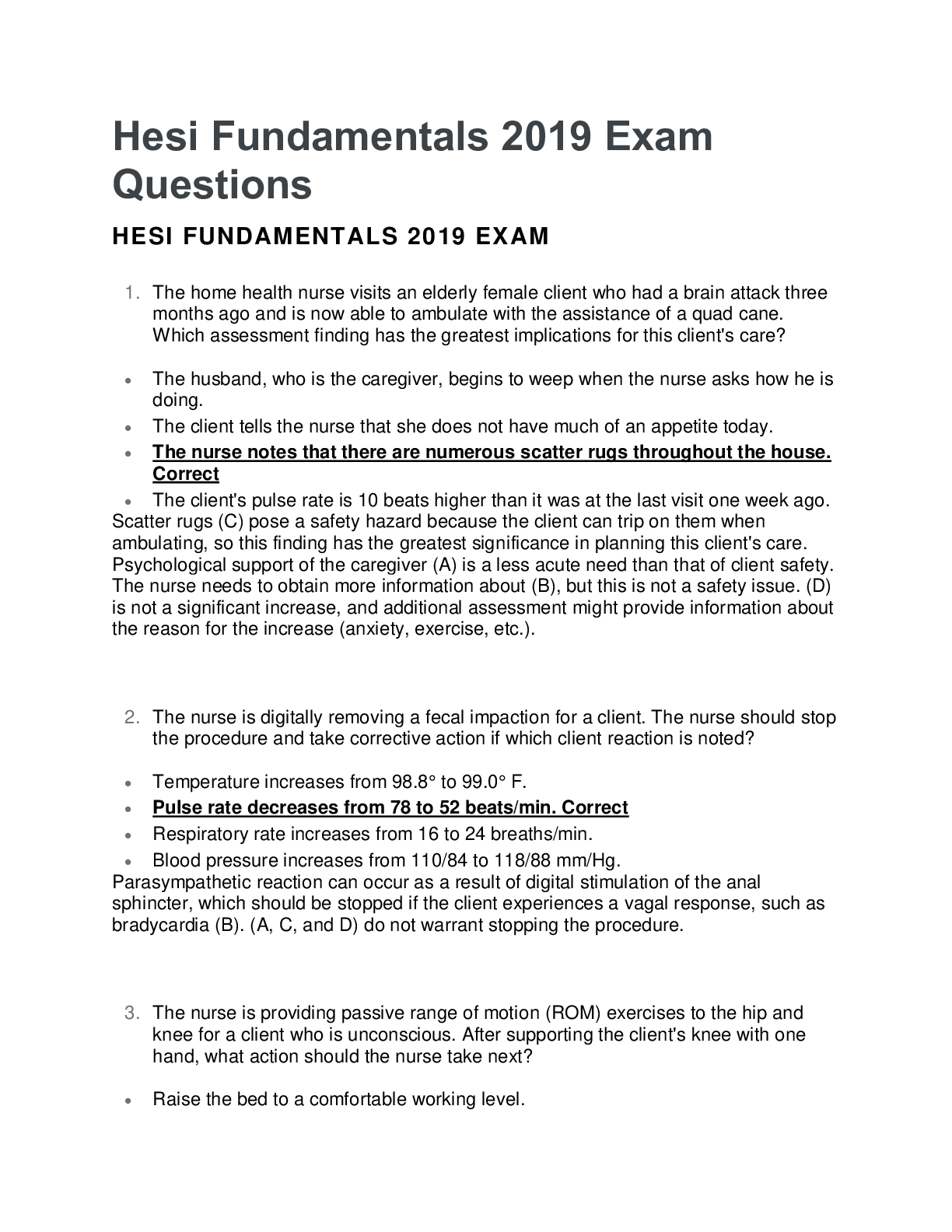
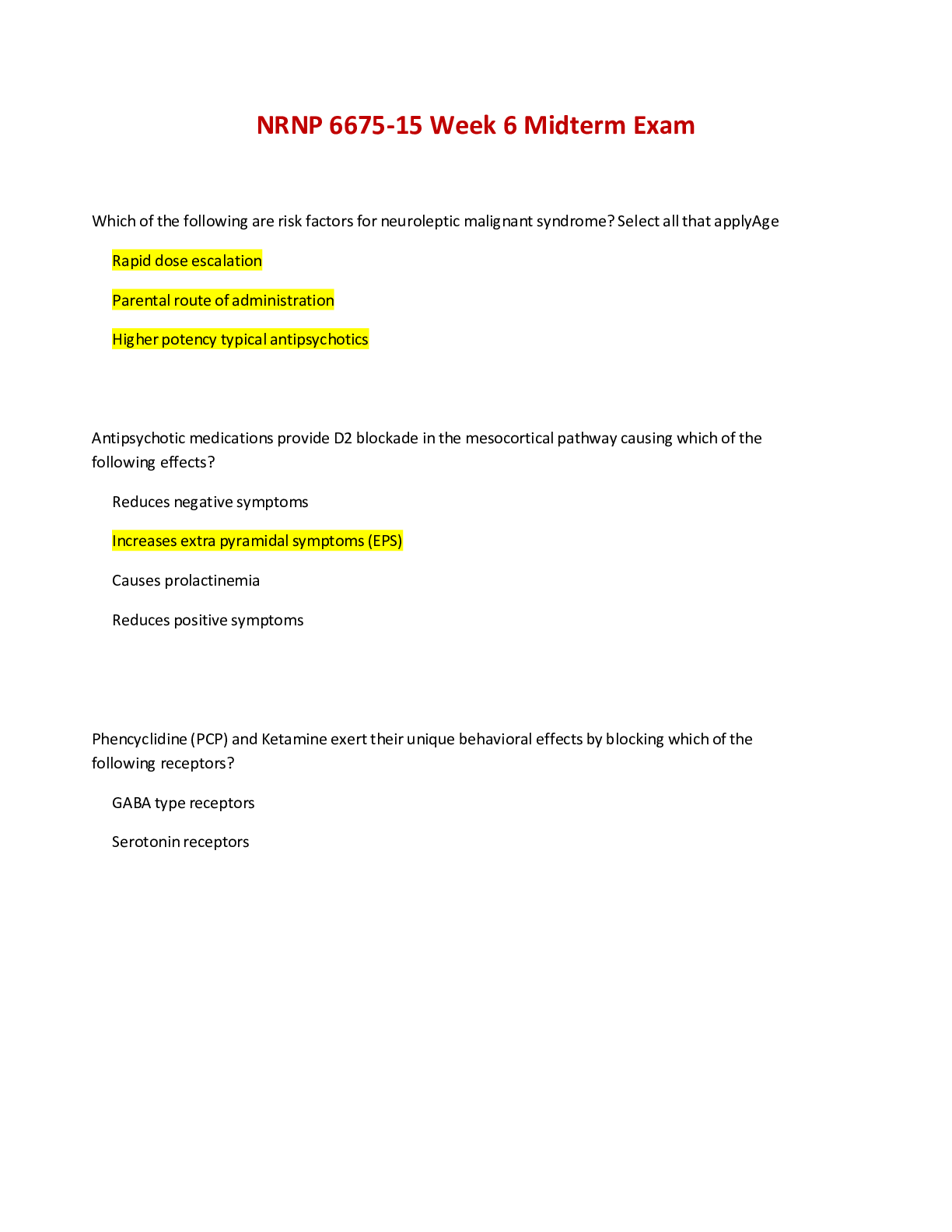
.png)
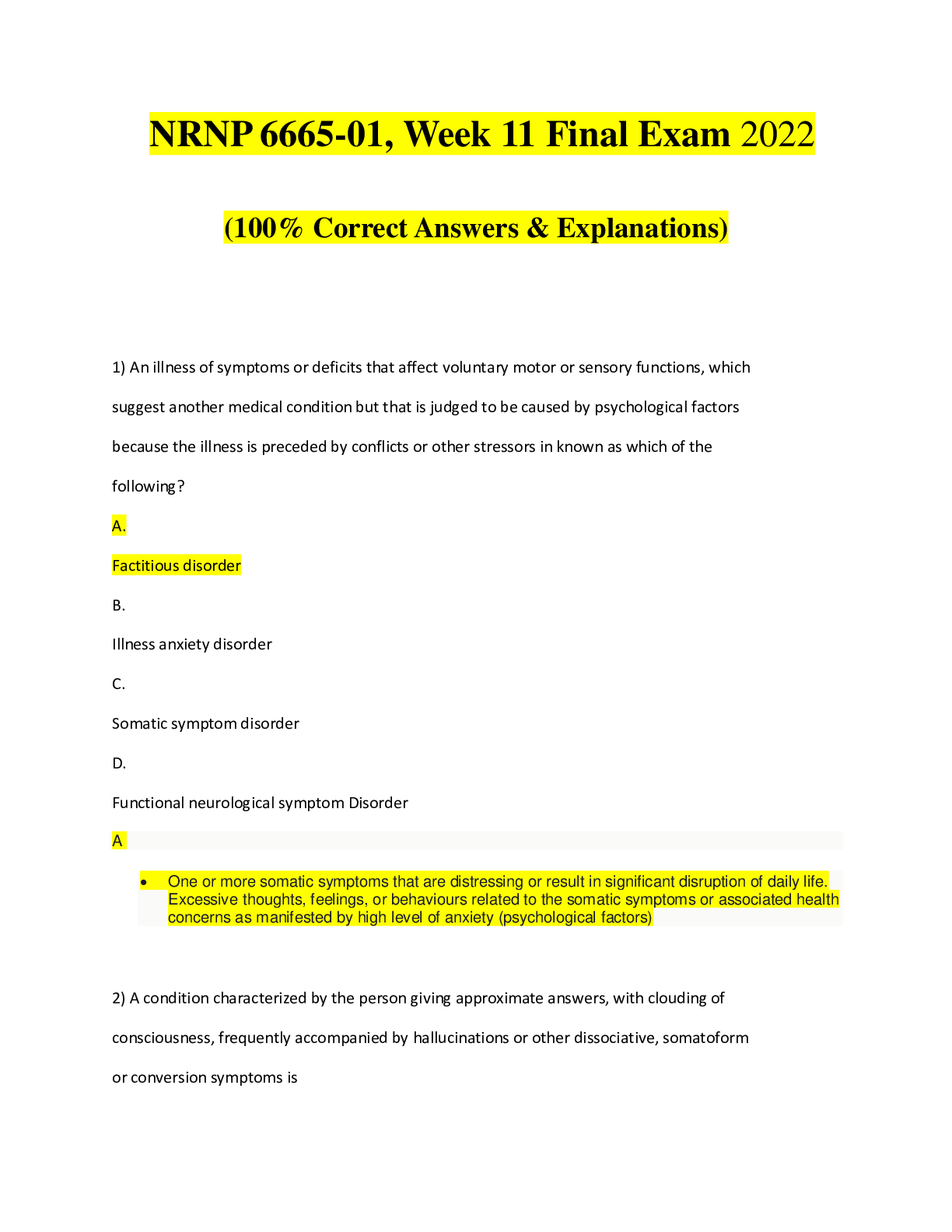
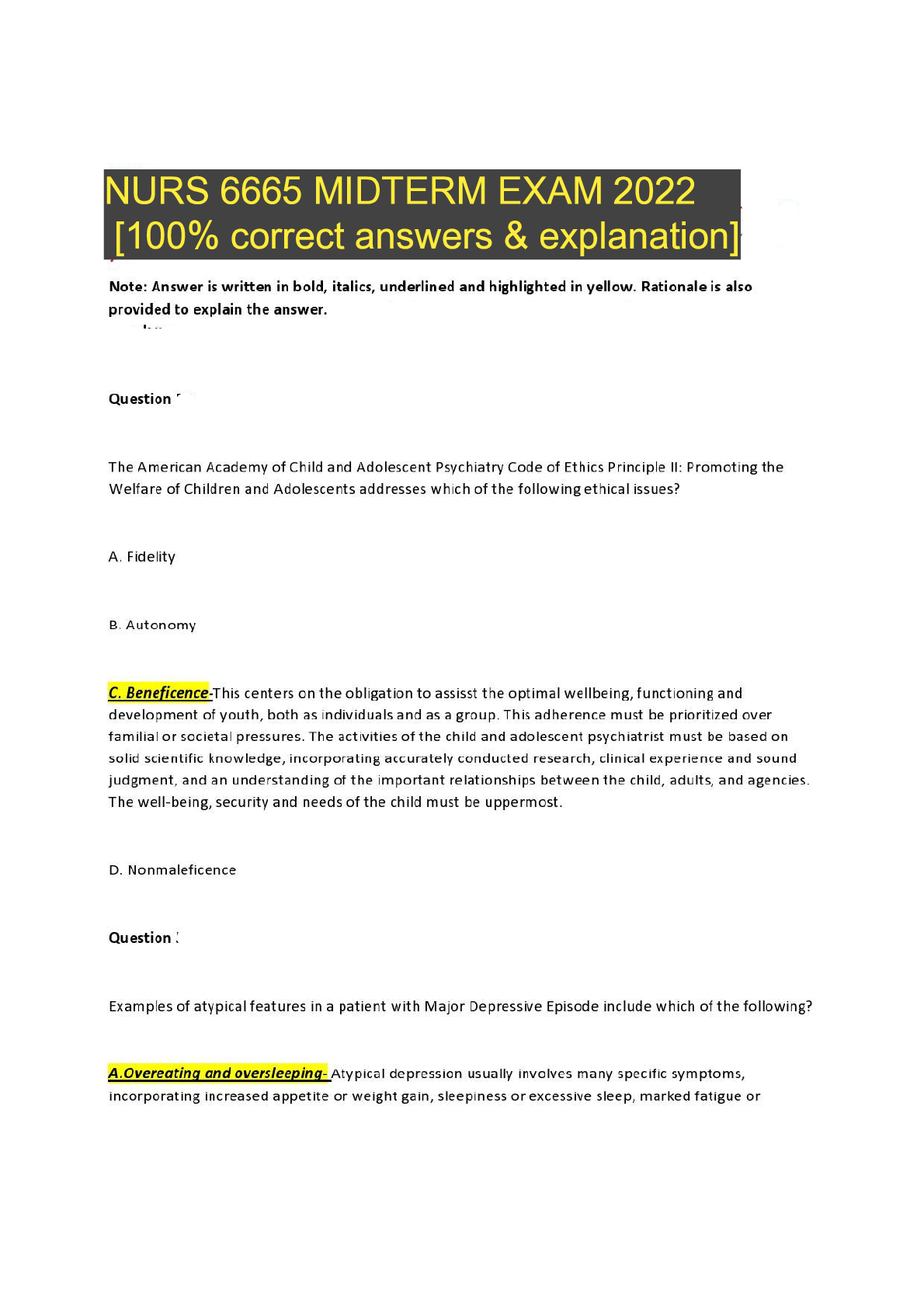
.png)
_removed.png)
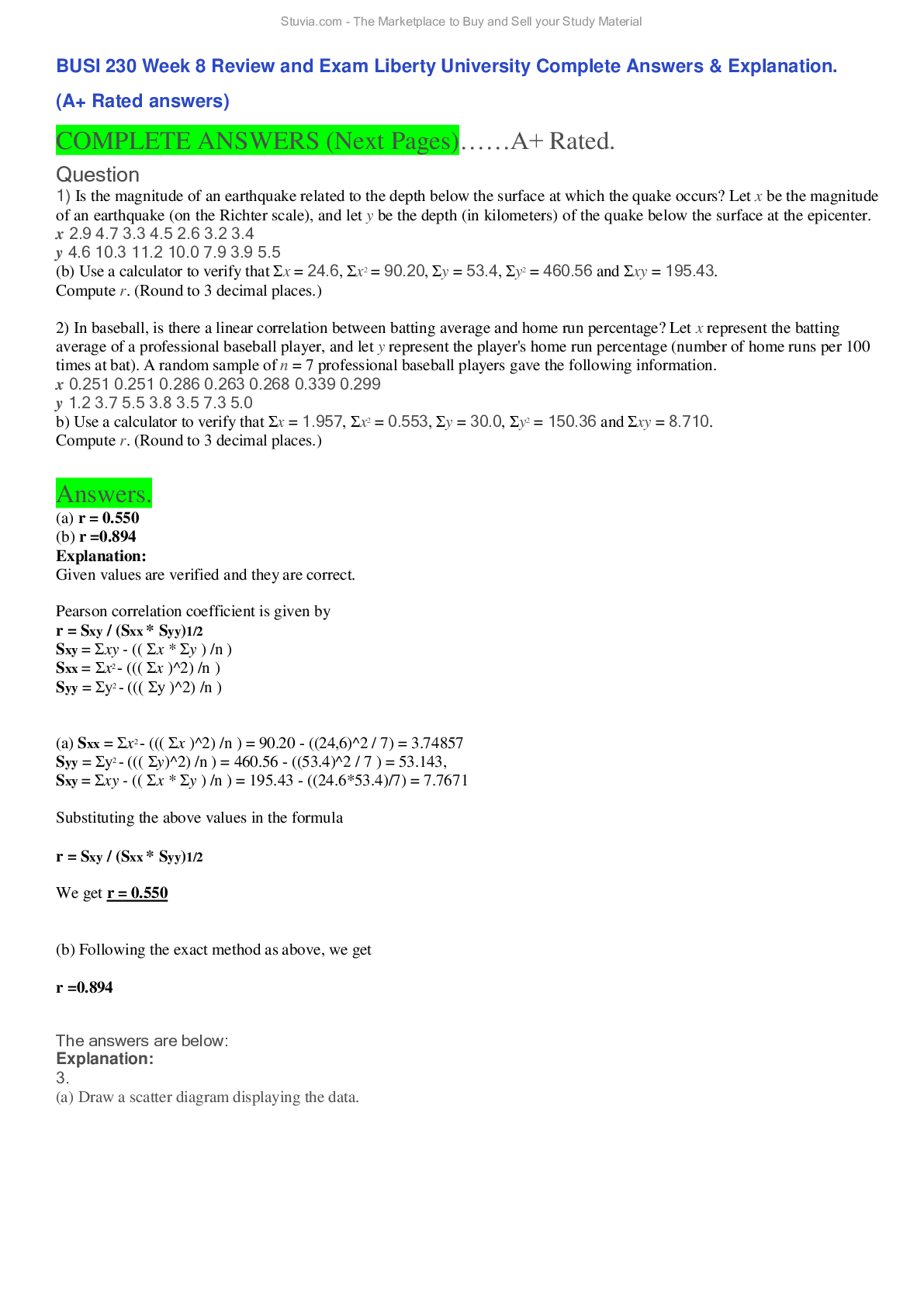
 (1)_removed.png)
